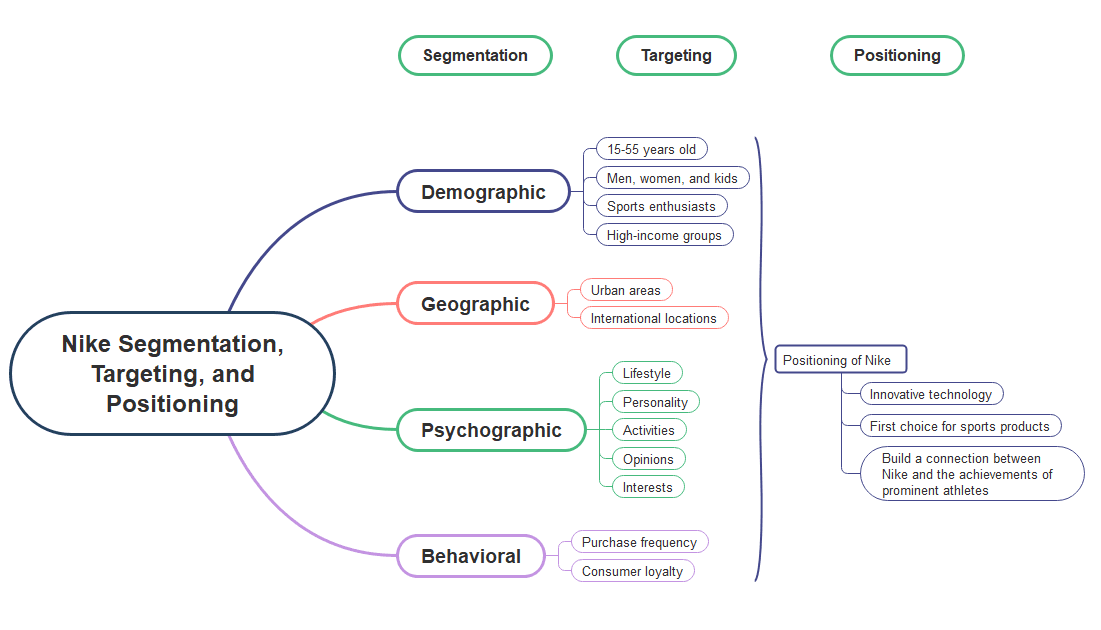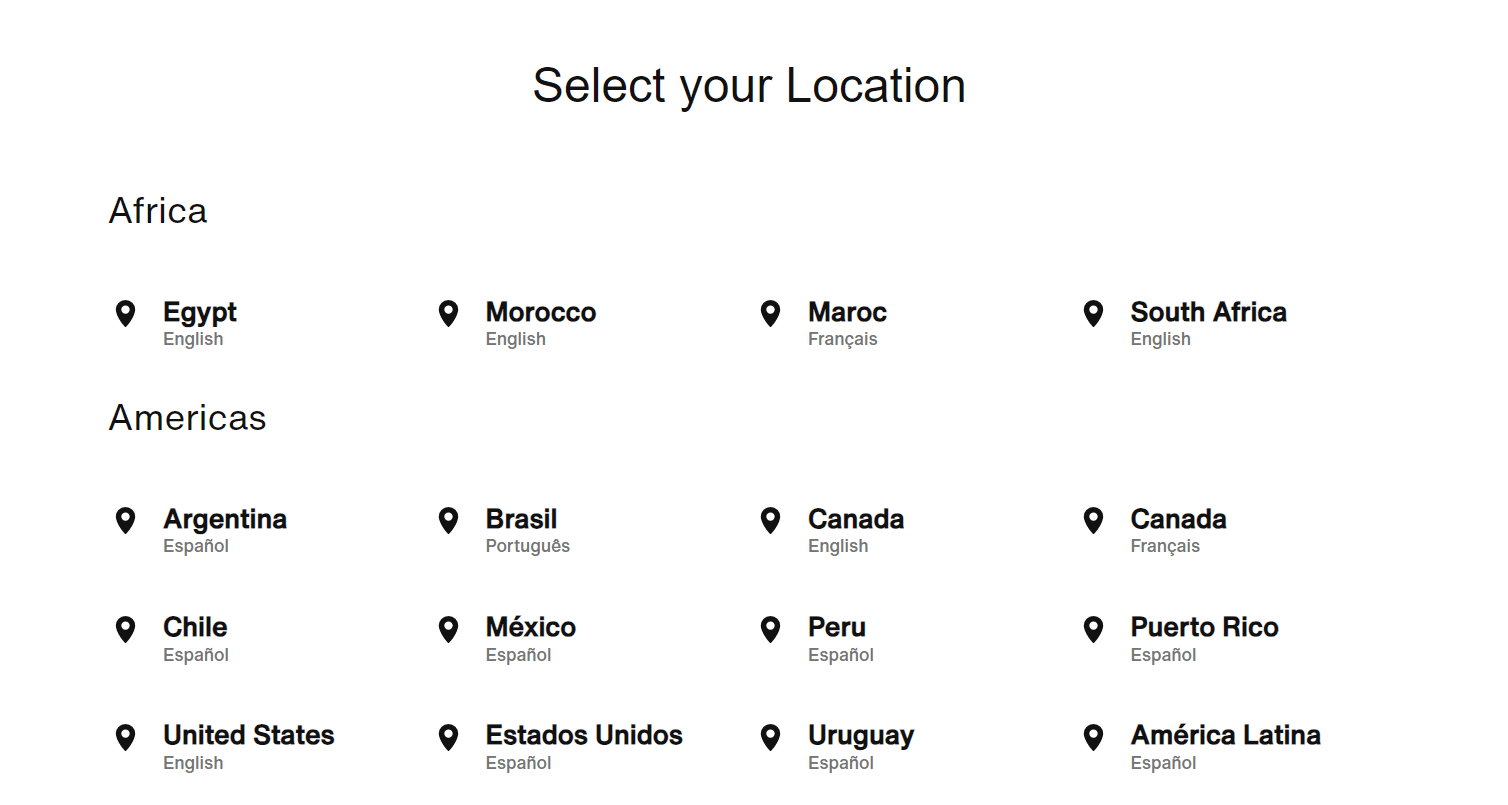- 31st Dec, 2023
- Nisha D.
SEO Strategies: The Key to Digital Marketing Success
15th Nov, 2023 | Arjun S.
- Marketing

In today's fast-paced digital world, SEO is the driving force behind online success.
But here's the catch – it's not the SEO of yesteryear.
Search engines are smarter, users are savvier, and the competition is intense.
In this article, we'll uncover the SEO strategies that are making waves and show you how to stay ahead in the ever-evolving digital marketing game.
What is an SEO Strategy?
An SEO strategy is a comprehensive plan that outlines the steps and techniques a business or website owner must take to optimize their online presence for search engines.
It involves a series of tactics and best practices aimed at improving a website's visibility on search engine results pages (SERPs). The ultimate goal is to rank higher for relevant keywords, attract organic traffic, and enhance the user experience.
Search engine optimization (SEO) is a critical strategy for organisations seeking to boost organic traffic, improve online exposure, and gain a competitive advantage in the wide and ever-changing field of digital marketing.
We will break down the steps into three categories Technical SEO, On-page SEO, Off-page SEO for developing a customized SEO strategy enhanced with real-world examples to highlight the way to digital marketing success.
Technical SEO
Technical SEO centers on fine-tuning the technical facets of your website to elevate its performance in search engine rankings.
Vital components include:
1. Crawlability and Indexability
Think of Google's web crawlers as super-efficient librarians. They scan through the pages of your website, just like a librarian cataloging books.
Technical SEO makes sure your website is as inviting to these crawlers as a well-organized library is to a bookworm.
To make your site "crawlable," you should create a sitemap. This is like a table of contents for your website. It helps the crawlers navigate and index your pages efficiently.
Let's say your website is a bookstore. The sitemap is your bookstore layout; it tells visitors (and Google) where to find each section, from fiction to non-fiction.
2. Mobile-Friendliness
In today's smartphone-driven world, you don't want to be the odd one out. Technical SEO ensures your website looks and works smoothly on mobile devices.
It's like making sure your shop window is equally enticing, whether you're looking from the street or through your phone's screen.
Google loves mobile-friendly websites because it wants users to have a great experience, no matter the device. So, make sure your website is responsive and fits perfectly on all screens, big or small.
3. Website Speed
Remember the feeling of waiting for a slow-loading website?
It's as frustrating as waiting in a long queue at a restaurant. Technical SEO helps speed things up. The faster your website loads, the happier your visitors (and Google) will be.
So, optimize your images, reduce unnecessary code, and use fast hosting.
You can think of it as making your website run like a well-oiled machine, always ready to serve up a website experience without keeping anyone waiting.
4. Secure your Website
Technical SEO ensures your website is served over a secure "HTTPS" connection.
This not only makes your visitors trust you more (just like a secure lock on your door), but Google also gives extra points for secure websites.
So, invest in an SSL certificate, and you'll have a digital lock protecting your online home.
On-Page SEO
On-page SEO involves optimizing the content and elements within your website to enhance its visibility on search engines.
In this section, we'll learn the basics of on-page SEO—simple tips and tricks to boost your website's visibility on search engines.
1. Define your SEO objectives
Effective SEO begins with clear objectives. Before diving into tactics, you must define what you aim to achieve.
Here are some examples of objectives:
-
Increase Organic Traffic
A common goal is to boost the number of visitors coming to your website through organic search results.
-
Improve Keyword Rankings
Target specific keywords or phrases to rank higher on search engine results pages (SERPs).
-
Enhance Brand Visibility
Raise awareness of your brand in online searches, making it more discoverable to potential customers.
-
Drive Conversions
Focus on optimizing for keywords with high conversion potential, such as product-specific terms.
Image Source: SEO
Nike, as a leading sportswear company, sets clear and ambitious SEO objectives.
One of their primary objectives is to increase online sales by a significant percentage within a specific timeframe. This objective is well-defined, measurable, and directly tied to their business growth.
2. Keyword Research
The basis of your SEO approach is keyword research. It involves identifying the keywords and phrases that your target audience uses when searching for products, services, or information about your business.
Here's how to do it:
When starting an SEO strategy, one of your initial steps is to identify your “primary keyword."
Think of the primary keyword as the general word or phrase that best describes your product, service, or the topic you wish to focus on. This term encapsulates the core essence of what you're offering or discussing.
For example, if you're working on optimizing Nike's online presence, your primary keyword might be "athletic footwear", “shoes online” or “sportswear company”. This term represents one of the core offerings of the Nike brand.
Primary keywords often have high search volumes, meaning that numerous people search for these terms every month, especially in the case of a well-known brand like Nike.
The popularity of these terms makes them more competitive in the SEO landscape but also potentially more rewarding in terms of brand visibility and sales.
Begin by searching for your primary keyword directly on Google. Pay attention to what you see in the search results and on the search engine results pages (SERPs).
The key here is to get a grasp of the search landscape by living directly in the SERPs.
This is important because Google constantly introduces new SERP features, and understanding what appears in the search results for your head term can guide your strategy.
You can also utilize keyword research tools like Google Keyword Planner, SEMrush, Ubersuggest, or Ahrefs to discover high-potential keywords, search volume, and competition levels.
Let’s take the example of SEMrush and how you can do keyword research for the brand Nike:
-
Initial Keyword Research
Start by entering the brand website into SEMrush's Keyword Analytics tool. This will give you a list of keywords related to Nike.
-
Identify High-Performing Keywords
Sort the list of keywords by different metrics, such as search volume and keyword difficulty, to identify keywords that may be relevant and have high search potential.
For this example, let's say you discover that "dj khaled jordan 5" is a keyword that Nike is already ranking well for.

-
Analyze Competitors for the Same Keyword
After identifying "dj khaled jordan 5" as a keyword of interest, you can use SEMrush's Competitor Research feature to analyze how Nike's competitors are performing for the same keyword.
Enter "dj khaled jordan 5" into the Competitor Research tool.
SEMrush will provide a list of websites that are also ranking for this keyword. These websites are your competitors for this specific keyword.

-
Analyze the Competitors' Performance by Looking at Their
a. Organic Search Positions: Check which competitors are ranking on the first page of search results for the keyword "dj khaled jordan 5."
b. Backlinks: Evaluate the backlink profiles of these competitors to see if there are any valuable opportunities for link building or partnerships.
c. Content: Examine the content on their pages that are ranking well. What type of content are they using? Can you create better, more informative, or more engaging content around the same keyword?
-
Keyword Optimization
After analyzing your competitors, you can fine-tune your own content and SEO strategy to improve your rankings for the "dj khaled jordan 5" keyword.
This might involve creating high-quality content, optimizing on-page SEO elements, and building relevant backlinks.
3. Page Optimization
On-page optimization involves fine-tuning individual web pages to improve their search engine performance.
Key elements include:
-
Meta Tags
Craft compelling meta titles and meta descriptions that incorporate target keywords.
-
Content Quality
Craft content of superior quality, rich in information, and captivating to meet user intent effectively.
-
Heading Tags
To structure your material and make it more understandable, use suitable heading tags (H1, H2, H3).
-
Keyword Placement
Incorporate target keywords naturally within your content, headings, and meta tags.
Nike maintains an informative and customer-centric blog section, offering a wealth of knowledge to its audience.
Nike takes care to include relevant headings and meta tags, enhancing the discoverability and user-friendliness of their content while fostering a deeper connection with their customers through comprehensive and insightful articles.
As an example, consider this blog, which strategically incorporates "running shoes" as a primary keyword, reflecting the brand's commitment to delivering high-quality content and insights related to this specific topic.
4. Analyze your Target Audience
When you're diving into the world of SEO, one of the crucial steps is to understand your target audience.
Let's discuss how to analyze your target audience using the example of Nike.
-
Demographic Analysis
Start by identifying the demographic characteristics of your audience. Nike, for instance, caters to a broad demographic that includes age groups, genders, and income levels.
Analyze your audience's age, gender, income, location, and other relevant factors to gain a clear understanding of who they are.
-
Psychographic Segmentation
Nike goes beyond demographics and dives into psychographics. This means understanding the psychological and lifestyle factors that influence their audience.
They recognize the mindset of athletes, running enthusiasts, and sustainability advocates.
To analyze your target audience, consider their values, interests, attitudes, and lifestyle choices.
-
Behavioral Insights
Study the behavior of your audience.
Nike does this by recognizing the behaviors of athletes, the purchasing patterns of running enthusiasts, and the preferences of sustainability advocates.
Analyze your audience's online behavior, such as what websites they visit, what they search for, and their buying habits.
-
Identify Pain Points and Needs
Nike acknowledges the specific needs and pain points of each audience segment. For example, they understand that athletes require high-performance gear.
To analyze your audience effectively, determine their pain points and needs in your industry. This can be done through surveys, social listening, or customer feedback.
Nike’s Target audience
To gain a comprehensive understanding of the effectiveness of Nike's marketing strategy, it's essential to break down the distinct segments within their extensive target audience.

Image Source: Target audience
This diverse and inclusive approach to their target audience has been a pivotal factor in the triumph of Nike's marketing strategy.
It underscores their adeptness in establishing connections with a wide spectrum of consumers, ranging from professional athletes to environmentally conscious individuals.
5. Creating High Quality Content
Creating search engine optimized content is the heart and soul of any SEO strategy. It's where all the research you've done in the initial stages finally comes to life.
Let's dive into this crucial step while keeping it simple and conversational, drawing inspiration from the content you've referenced.
-
Content That Speaks Both to Humans and Search Engines
When you're ready to roll up your sleeves and create content that's all set to rock the SEO world, you're entering the exciting realm of crafting search engine optimized content.
But here's the golden rule: humans come first, search engines come second.
Think of it like this: you're writing an article not just for Google's algorithms but also to genuinely help someone. It's like holding the algorithm's hand and guiding it through the maze of your content.
-
Keyword Inclusion
One of the foundational steps in optimizing your content for search engines is to include your target keyword strategically. It's like seasoning a dish to perfection.
The keyword should be sprinkled throughout your content, but not overwhelmingly so.
For instance, if you're aiming to rank for the term "running shoes," make sure it's in the page title, the H1 header (the big, bold title at the top), and the opening paragraph.
And even in the meta description (the snippet that appears in search results).
Placing your keyword thoughtfully in these areas is your way of helping Google understand what your content is all about.
-
Be Incredibly Helpful
The essence of SEO is not just about keywords and rankings; it's about being incredibly helpful.
This is where you look at the search engine results and your competitors. You're trying to understand what information or solution people are seeking when they type in your target keyword.
For example, if you're writing about running shoes, think about the common questions people have.
What are the challenges they face? What guidance can you offer?
By addressing these questions and being genuinely helpful, you're not just pleasing Google; you're making your content invaluable to your audience.
-
Alt Text and Image Optimization
Images are not to be overlooked in SEO. They present an excellent opportunity to enhance your content's visibility.
Alt text, which describes the content of an image, is not only great for web accessibility but also helps you rank in Google's image results.
For instance, if you have an image related to "shoes," your alt text could be "running shoes" This way, your image stands a better chance of appearing in relevant image search results.
Additionally, remember to compress your images. This helps your page load faster, and faster-loading pages make for a better user experience, which Google appreciates.
-
Internal Links
Creating fantastic content is just the beginning. You also need to link it all together.
Think of your website as a library and your content as books on the shelves. Internal linking is like building a network of paths through your library.
By internally linking from one page to another, you're not only making it easier for users to navigate your content, but you're also giving Google a roadmap to follow.
This internal linking strategy helps establish your website's authority in your niche. And authority is like the golden ticket in the world of SEO.
So, when you're creating SEO-optimized content, remember the balance: cater to humans, assist the search engines, sprinkle in those keywords, be incredibly helpful, optimize your images, and create a web of internal links.
6. SEO Localization
SEO localization is a critical aspect of digital marketing that involves tailoring your online content and strategies to target specific regions or countries.
This practice is essential for global brands like Nike.
By localizing their website, Nike ensures that users in different regions have a seamless and personalized experience.
For instance, when users from various countries visit Nike's website, they are presented with options to select their country. This instantly makes users feel more at home, as the content, currency, and language are adapted to their location.
Off-page SEO
Off-page SEO involves activities outside your website that boost its visibility and credibility. Search engines, like Google, consider these external factors to determine your site's authority and relevance. The aim is to position your website as a reliable source in your industry.
In this section, we will guide you through the essentials of off-page SEO and how to enhance your website's performance.
1. Link Building
Content plays a significant role in SEO, but it's not the only player in the game. It needs a strong partner, and that's where backlinks comes in.
Imagine them as the dynamic duo of the SEO world. Even if your website is polished, optimized for search engines, and visually appealing, Google won't give it the recognition it deserves unless other websites vouch for it by linking to your content.
Let's emphasize this point because it's truly crucial.
Backlinks are like the votes of confidence from other websites that tell Google you're a trustworthy and reliable source of information.
In essence, the more backlinks you collect, the more authority you gain in Google's eyes.
The logic here is simple: other websites wouldn't refer their readers to you unless they believed in your expertise.
Now, let's get down to business. Here are some of the strategies for securing those valuable backlinks:
- Write guest blog posts for other websites and include links back to your own.
- Craft content that's so informative and useful that other websites can't resist linking to it.
- Produce original research that's so intriguing that other publishers can't help but reference it.
- Collaborate with companies on co-marketing campaigns, allowing you both to benefit from backlinks.
- Join industry membership organizations that have public profiles, and you'll likely earn backlinks from their websites.
- Sponsor events and conferences, and you'll often receive mentions on their websites with backlinks.
2. Leveraging Social Media
Social media is integral to off-page SEO. While likes and shares may not directly impact rankings, they contribute to online presence.
A robust social media presence drives traffic, increases brand awareness, and indirectly influences search rankings.
-
Consistent Branding
Maintain a uniform brand presence across all platforms for trust and recognition.
-
Engage with your Audience
Respond actively to comments and messages. Engagement builds a community around your brand.
-
Share High-Quality Content
Regularly share valuable content. This attracts your audience and encourages organic sharing.
3. Online Reputation Management
Your online reputation matters. Positive reviews and mentions enhance credibility, while negative ones can harm it. Actively manage online reviews, respond to feedback, and address concerns promptly.
-
Monitor Mentions
Use tools to track brand mentions and respond promptly.
-
Encourage Reviews
Ask satisfied customers for positive reviews on relevant platforms.
-
Address Negative Feedback
Respond professionally to negative reviews. Show commitment to customer satisfaction.
Optimizing SEO: Exploring Additional Strategies
1. Monitor, Analyze, and Adjust
Continuous monitoring and analysis are essential to measuring the effectiveness of your SEO strategy.
Use tools like Google Analytics and Google Search Console to track metrics such as organic traffic, keyword rankings, and conversion rates. Adjust your strategy based on data-driven insights.
For example, if you notice that a particular keyword is driving substantial traffic but has a low conversion rate, you may need to optimize your landing page for conversions.
2. Stay updated with SEO Trends
SEO is a dynamic field that evolves rapidly. Keep up with the newest algorithm upgrades and industry trends. Adapt your strategy to stay competitive and responsive to changing user behaviors.
With the rise of voice search, you might optimize your content for voice queries by providing concise, conversational answers to commonly asked questions in your niche.
3. Seek professional assistance
If you're new to SEO or require specialized expertise, consider seeking help from SEO professionals or agencies. Their experience and insights can be invaluable in optimizing your strategy for success.
For example, a legal firm might consult with an SEO agency specializing in law-related SEO to ensure their strategy aligns with industry-specific best practices.
At Bombay Softwares, we specialize in tailoring SEO strategies to meet your unique needs.
Our team of experts is well-versed in the intricacies of various industries and can provide the guidance and support necessary to propel your digital marketing efforts to new heights.
Conclusion
As we conclude our exploration of SEO for digital marketing success, it's crucial to acknowledge that the landscape of search engine optimization is ever-evolving.
The strategies and techniques discussed in this article serve as a solid foundation for enhancing your online presence today. However, the future of SEO promises even more exciting developments.
Looking ahead, we can anticipate artificial intelligence and machine learning to play an increasingly significant role in search algorithms.
These technologies will enable search engines to understand user intent even better, resulting in more accurate and personalized search results.
Moreover, the growing importance of voice search, mobile optimization, and user experience will continue to shape the SEO landscape.
To remain competitive, digital marketers must adapt to these changes, staying agile and responsive to emerging trends and technologies in the ever-evolving world of SEO.
By doing so, they will be well-positioned to seize new opportunities and achieve even greater digital marketing success in the future.
More blogs in "Marketing"
- 25th Oct, 2023
- Rinkal J.
AI Marketing: Your Guide to AI-Powered Marketing
- 12th Nov, 2023
- Rohit M.
Social Media Sentiment Analysis - Boost Brand Success
Join our Newsletter
Get insights on the latest trends in technology and industry, delivered straight to your inbox.

















